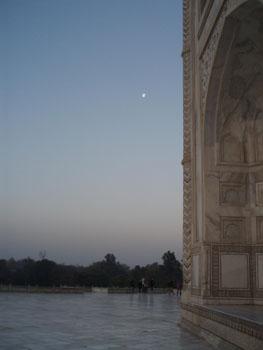“Want to come to Sarnath tomorrow?,” my friend Evan asked, deep into his second Kingfisher of the evening. I was sitting in Varanasi’s German Bakery, hanging out with the clique of backpackers I’d befriended in my four days on the banks of the Ganges.
“Nah, I have a ticket to Agra.”
Like many other travelers jaded from the road and from too many flips through the Lonely Planet, Evan thought himself the authority on what not to do in India. To hear him tell it, Agra was the ultimate tourist trap. Everyone else at the table agreed. Dirty, smelly, dusty, hot, and infested with touts and petty criminals. Ripoff central. The last place in the world anyone in their right mind would want to go.
Early the next morning I was Agra-bound, sipping chai on the Patna Mathura Express. What I found when I got there surprised me. Rather than a gauntlet of scams and nuisances to be put up with, Agra was a highlight of my two months in India. Approaching it with openness and optimism, in many ways I found the “Real India” most travelers spend their whole trip searching for.
The journey from train station to guesthouse is the most vulnerable moment for a backpacker in India. A million things can go wrong. There are evil rickshaw drivers with designs on your pocketbook. Everyone you meet has an uncle who runs a hotel or a silk shop, not to mention the ability to obtain every mind-altering substances from whiskey to heroin and back. There are purse snatchers, bag slashers, and urchins who’ll throw shit on your shoes and demand a thousand rupees to clean them off again.

 Adventures off the beaten path are the experiences that entice us to travel, but sometimes paths are beaten for a reason. You really can’t visit Agra without a stop at the Taj Mahal, and the best way to do this is to arrive when the site opens, just before sunrise. The marble is cool against your bare feet, and the perfume of the rose gardens wafts in the morning air. Even off the postcards and big as life, the Taj Mahal can’t help being sort of a cliche. But it’s an endearing one, and even hardened cynics leave the Taj a little more innocent than we arrived.
Adventures off the beaten path are the experiences that entice us to travel, but sometimes paths are beaten for a reason. You really can’t visit Agra without a stop at the Taj Mahal, and the best way to do this is to arrive when the site opens, just before sunrise. The marble is cool against your bare feet, and the perfume of the rose gardens wafts in the morning air. Even off the postcards and big as life, the Taj Mahal can’t help being sort of a cliche. But it’s an endearing one, and even hardened cynics leave the Taj a little more innocent than we arrived.
Another well-tread path awaited me at outside the gates. The lane that connects the Taj Mahal’s main entrance with the supporting tourist infrastructure is a gauntlet of trinket shops and travel agencies, all with proprietors desperate to prey upon that newfound innocence. At the end of this gauntlet lies the best breakfast I ate in all of northern India.
Joney’s Place is the sort of restaurant that anyone who considers herself a traveler rather than a tourist instinctively knows to avoid. There are grimy photographs of nuclear-hued Full English Breakfasts on the wall above the counter. Laminated testimonials dripping with Aussie slang are displayed at each table: “Don’t worry, the food isn’t spicy at all. This is our second time eating here, and we haven’t got sick yet!” But it’s here. The chai is boiling, the chappatis are bubbling, and it’s completely free of touts.
At the counter, I asked the bent-over chef, “I’d like what you’d eat for breakfast. And please make it spicy!” Moments later, a platter appeared laden with masala chai, fresh yogurt, and an aloo parantha studded with chili. I sat with myself, my meal, and the Times Of India’s crossword page in one of the testimonial-covered booths, in mouth-burning culinary heaven. The chai was tooth- rottingly sweet, in the way that is only permissible here, and delicately spiced with cardamom and clove. The tart yogurt, a perfect foil for the exquisite torture of the parantha. I knew that, in asking for heat, I had set myself up for the chef to see exactly what kind of damage he could inflict. It’s a point of honor, a sacred compact between eater and cook.
My eyes watered over my crossword, and I thought of Evan back in Varanasi, who had rejected Agra without even seeing it. There and then, I vowed never to forget that authentic experiences can even be found in a hokey tourist restaurant in the center of the biggest hellhole in the most overrated city in India.